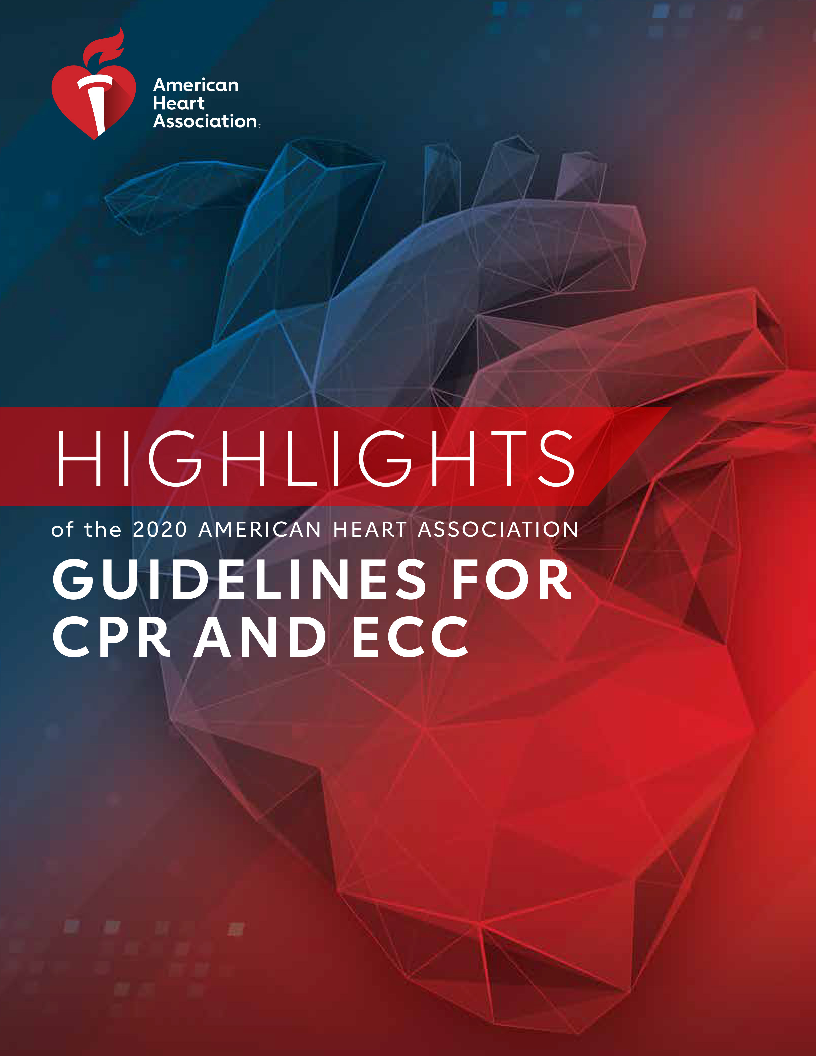Book Details

Highlights Of The 2020 American Heart Association (AHA) Guidelines for CPR and ECC
These Highlights summarize the key issues and changes in the 2020 American Heart Association (AHA) Guidelines for Cardiopulmonary Resuscitation (CPR) and Emergency Cardiovascular Care (ECC). The 2020 Guidelines are a comprehensive revision of the AHA’s guidelines for adult, pediatric, neonatal, resuscitation education science, and systems of care topics. They have been developed for resuscitation providers and AHA instructors to focus on the resuscitation science and guidelines recommendations that are most significant or controversial, or those that will result in changes in resuscitation training and practice, and to provide the rationale for the recommendations.
Because this publication is a summary, it does not reference the supporting published studies and does not list Classes of Recommendation (COR) or Levels of Evidence (LOE). For more detailed information and references, please read the 2020 AHA Guidelines for CPR and ECC, including the Executive Summary,1 published in Circulation in October 2020, and the detailed summary of resuscitation science in the 2020 International Consensus on CPR and ECC Science With Treatment Recommendations, developed by the International Liaison Committee on Resuscitation (ILCOR) and published simultaneously in Circulation2 and Resuscitation3 in October 2020. The methods used by ILCOR to perform evidence evaluations4 and by the AHA to translate these evidence evaluations into resuscitation guidelines5 have been published in detail.
The 2020 Guidelines use the most recent version of the AHA definitions for the COR and LOE (Figure 1). Overall, 491 specific recommendations are made for adult, pediatric, and neonatal life support; resuscitation education science; and systems of care. Of these recommendations, 161 are class 1 and 293 are class 2 recommendations (Figure 2). Additionally, 37 recommendations are class 3, including 19 for evidence of no benefit and 18 for evidence of harm.
Author: Dr. Eric J
Pages: 32
Issue By: Blue Stone Publication
Published: 1 year ago
Likes: 0